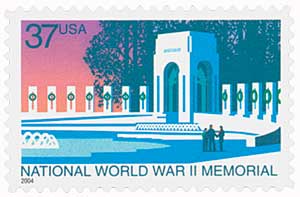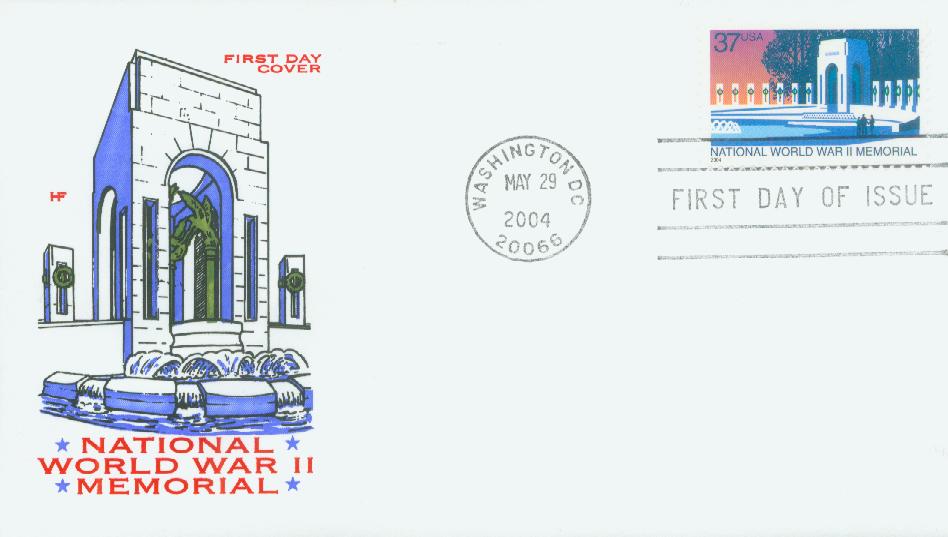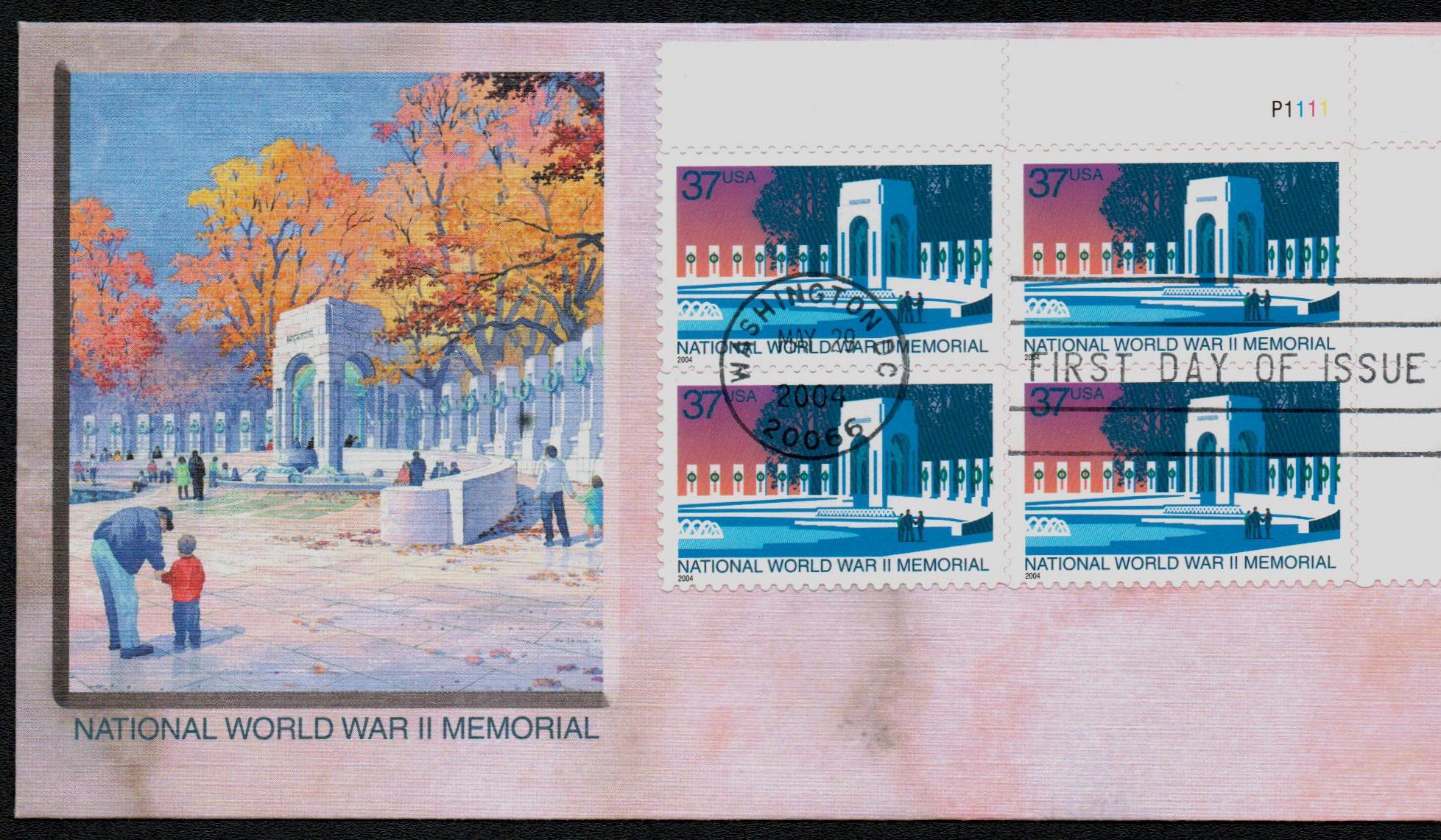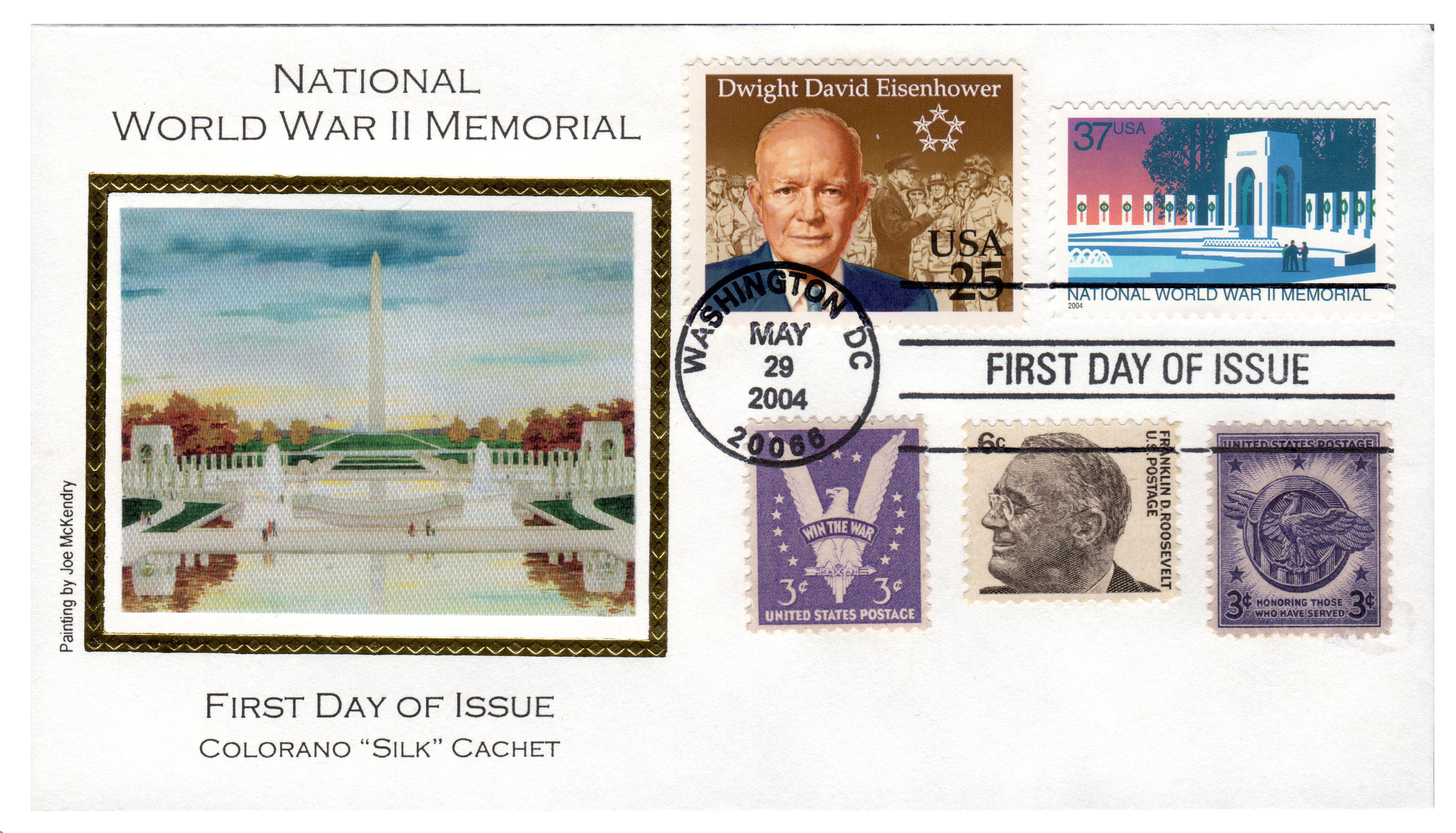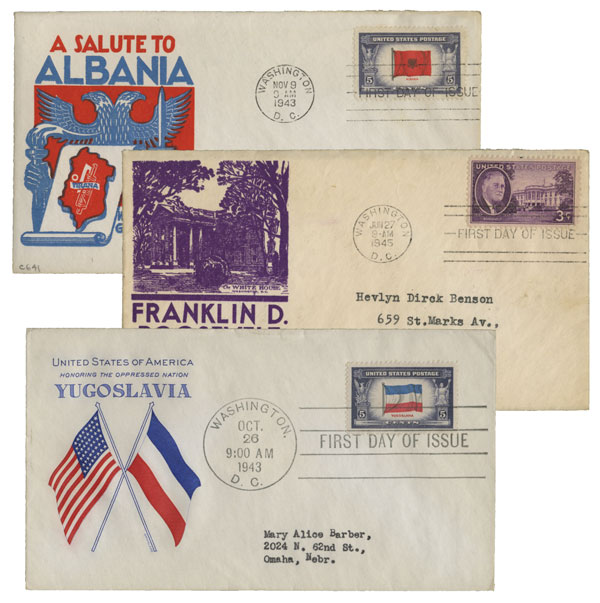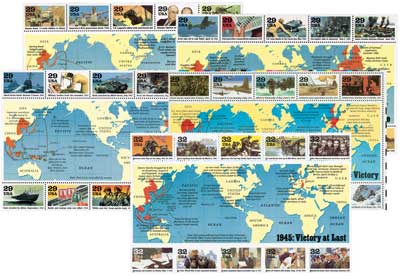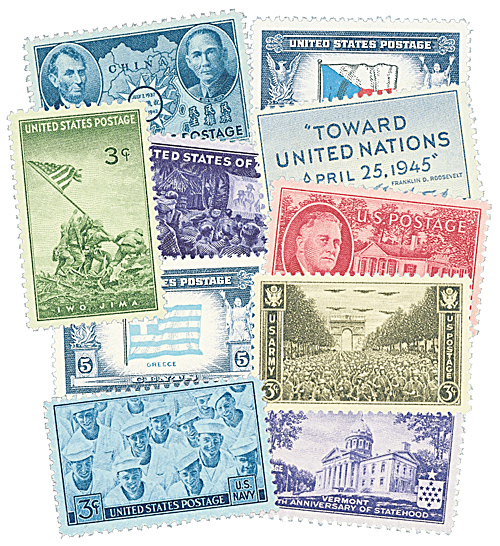
# 3862 - 2004 37c National World War II Memorial
2004 37¢ National WWII Memorial
City: Washington, DC
Quantity: 96,400,000
National World War II Memorial
On May 29, 2004, George W. Bush led the official dedication ceremony for the National World War II Memorial in Washington, DC.
World War II veteran Roger Durbin first suggested the memorial in 1987. He suggested the memorial to Representative Marcy Kaptur, who then introduced the World War II Memorial Act to the House of Representatives that December. For several years she introduced similar legislation, but it wasn’t voted on.
Then in 1993, Kaptur and Senator Strom Thurmond both introduced similar legislation that was finally passed and signed into law by President Bill Clinton that May. Fundraising efforts began the following year, which collected millions of dollars from individuals. Veterans groups such as the American Legion, the VFW, and others also made sizeable donations.
A committee then selected a site on the Rainbow Pool between the Washington Monument and the Lincoln Memorial, making it one of the most prominent memorial sites created in decades. A national design competition was held, which received 400 submissions from architects all over the country. Friedrich St. Florian submitted the winning design and construction began in September 2001.
The memorial has 56 17-foot-tall granite pillars placed in a semicircle surrounding a plaza with two 43-foot arches. The majority of the area in between is landscaping and water. The pillars are inscribed with the names of the 48 states (in 1945) plus the District of Columbia and US territories. The memorial also includes two “Kilroy was here” engravings and scenes from the war. There is also the Freedom Wall, which has 4,048 gold stars, with each star representing 100 Americans who died during the war.
The memorial opened on April 29, 2004, but the dedication ceremony was held a month later on May 29 as part of a four-day celebration leading up to Memorial Day. On May 29, over 150,000 people attended the dedication. The first two hours of the day’s events included music, videos, and newsreels from the wartime era. At 2 p.m., the ceremony began with a presentation of the state flags and a few words from World War II chaplain Philip M. Hannan. Other speakers included Tom Brokaw, Tom Hanks (the national spokesman for the memorial campaign), Senator Bob Dole, and Frederick W. Smith.
After the speeches, a Marine bugler played taps and President Bush addressed the crowd. He said it was “a fitting tribute, open and expansive, like America; grand and enduring, like the achievements we honor.” The day’s events also included the First Day Ceremony for the National World War II Memorial stamp.
The WWII Memorial stamp was created before the actual memorial was completed. The stamp’s designers based their work on the scale model of the memorial. It pictures one of the arches with some of the pillars in front of a sunset. The image of an American flag is visible below the denomination when viewed through a USPS Stamp Decoder lens.
Click here for photos and more about the memorial.
Click here for more stamps honoring World War II.
2004 37¢ National WWII Memorial
City: Washington, DC
Quantity: 96,400,000
National World War II Memorial
On May 29, 2004, George W. Bush led the official dedication ceremony for the National World War II Memorial in Washington, DC.
World War II veteran Roger Durbin first suggested the memorial in 1987. He suggested the memorial to Representative Marcy Kaptur, who then introduced the World War II Memorial Act to the House of Representatives that December. For several years she introduced similar legislation, but it wasn’t voted on.
Then in 1993, Kaptur and Senator Strom Thurmond both introduced similar legislation that was finally passed and signed into law by President Bill Clinton that May. Fundraising efforts began the following year, which collected millions of dollars from individuals. Veterans groups such as the American Legion, the VFW, and others also made sizeable donations.
A committee then selected a site on the Rainbow Pool between the Washington Monument and the Lincoln Memorial, making it one of the most prominent memorial sites created in decades. A national design competition was held, which received 400 submissions from architects all over the country. Friedrich St. Florian submitted the winning design and construction began in September 2001.
The memorial has 56 17-foot-tall granite pillars placed in a semicircle surrounding a plaza with two 43-foot arches. The majority of the area in between is landscaping and water. The pillars are inscribed with the names of the 48 states (in 1945) plus the District of Columbia and US territories. The memorial also includes two “Kilroy was here” engravings and scenes from the war. There is also the Freedom Wall, which has 4,048 gold stars, with each star representing 100 Americans who died during the war.
The memorial opened on April 29, 2004, but the dedication ceremony was held a month later on May 29 as part of a four-day celebration leading up to Memorial Day. On May 29, over 150,000 people attended the dedication. The first two hours of the day’s events included music, videos, and newsreels from the wartime era. At 2 p.m., the ceremony began with a presentation of the state flags and a few words from World War II chaplain Philip M. Hannan. Other speakers included Tom Brokaw, Tom Hanks (the national spokesman for the memorial campaign), Senator Bob Dole, and Frederick W. Smith.
After the speeches, a Marine bugler played taps and President Bush addressed the crowd. He said it was “a fitting tribute, open and expansive, like America; grand and enduring, like the achievements we honor.” The day’s events also included the First Day Ceremony for the National World War II Memorial stamp.
The WWII Memorial stamp was created before the actual memorial was completed. The stamp’s designers based their work on the scale model of the memorial. It pictures one of the arches with some of the pillars in front of a sunset. The image of an American flag is visible below the denomination when viewed through a USPS Stamp Decoder lens.
Click here for photos and more about the memorial.
Click here for more stamps honoring World War II.









